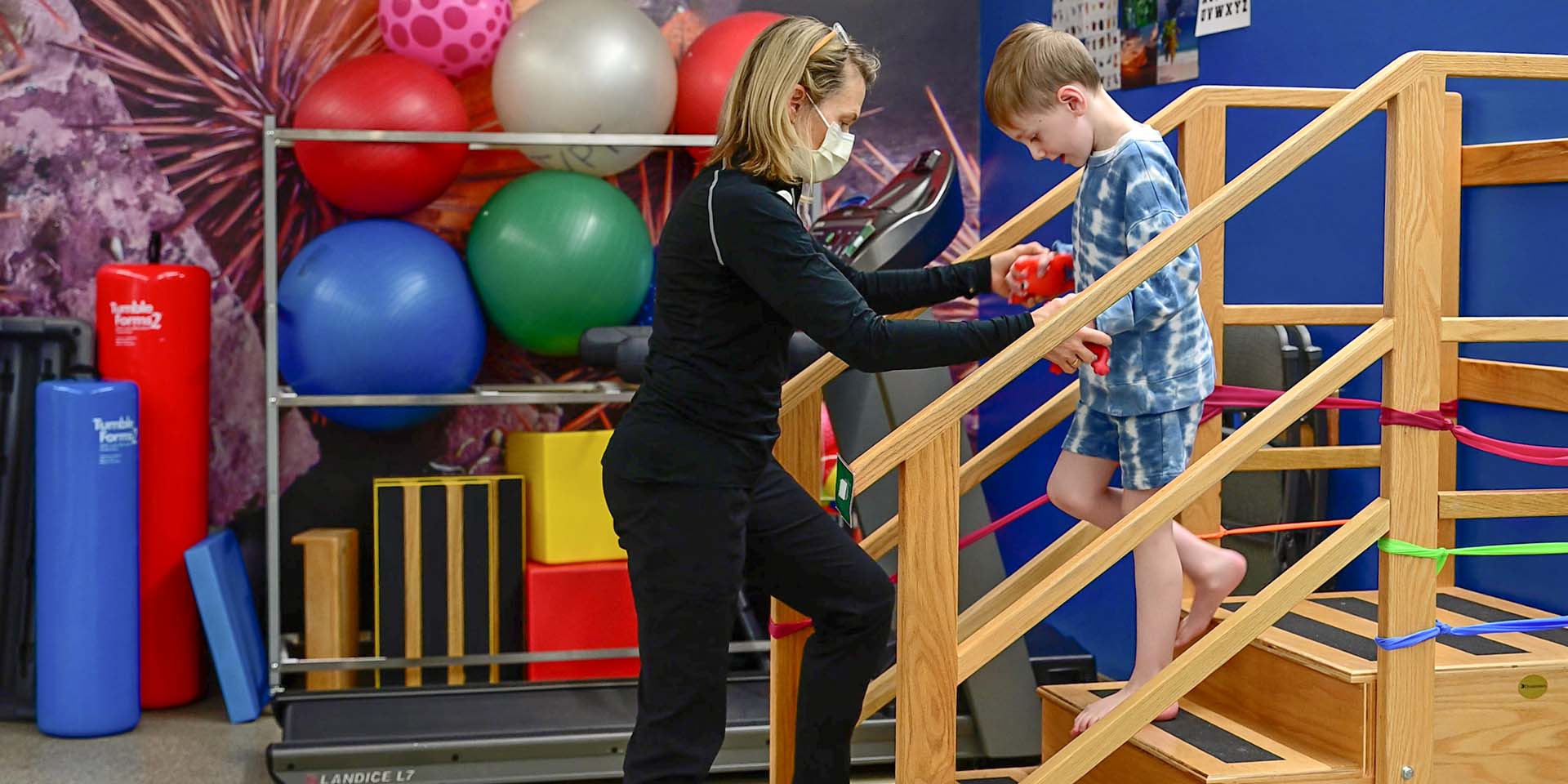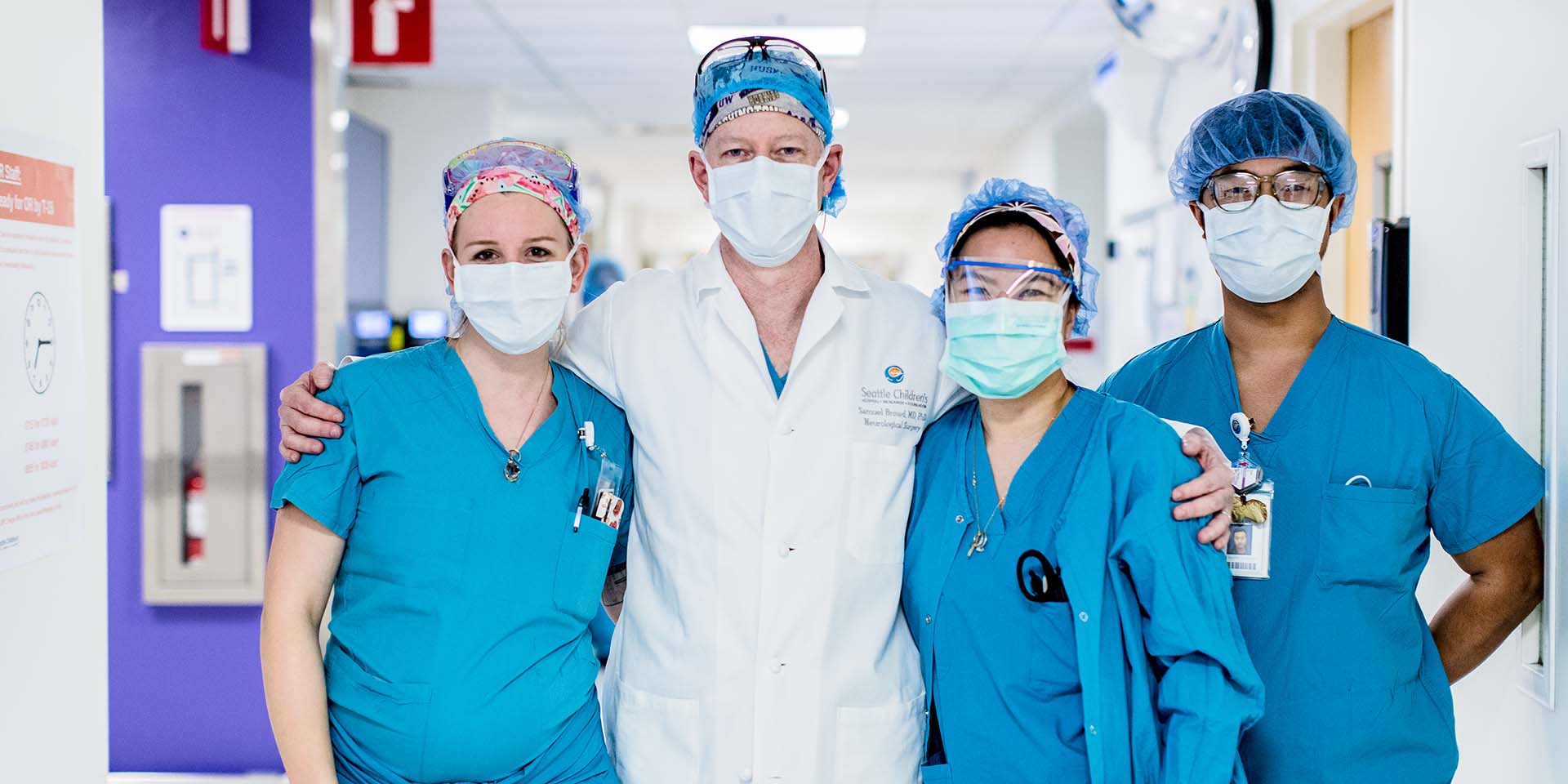
Selective Dorsal Rhizotomy (SDR)
Make an Appointment
Email or call 206-987-5917
Our Surgical Tone Management Clinic does not require a doctor’s referral.
Refer a Patient
Providers, call us at 206-987-5917
See referral guidelines and SDR resources from our Rehabilitation Medicine Clinic.
Selective dorsal rhizotomy (SDR) to improve mobility and quality of life for children with cerebral palsy
Seattle Children’s is the only hospital in the Pacific Northwest with the expertise to offer selective dorsal rhizotomy (SDR) surgery. Combined with intensive rehabilitation, SDR can help children with cerebral palsy and spasticity move more easily, with better balance and stamina.
As a result, your child can focus on learning and playing instead of trying to control their body. For many children, this single procedure avoids or reduces the need for future orthopedic surgeries.
Why Choose Seattle Children’s for Your Child’s SDR?

Your child will be cared for by the best. Dr. Samuel Browd, the board-certified pediatric neurosurgeon who will perform your child’s SDR surgery, is a world leader in training surgeons on this procedure. Our rehabilitation doctors, physical therapists and occupational therapists will work with you to customize a therapy plan based on your child's needs and goals. We provide seamless care from your first call and clinic visit through your child’s surgery and physical therapy. U.S. News & World Report consistently ranks Seattle Children's as one of the top children's hospitals in the nation and among the nation's best in neurosurgery.
SDR reduces spasticity by allowing the brain and spinal cord to “rewire”
If the signals between the brain, spinal cord, nerves and muscles are abnormal, your child’s leg muscles can be too tight. We call it spasticity. This happens in conditions like cerebral palsy (CP). SDR surgery on the lower spinal cord can reduce tightness (high muscle tone) in the legs and improve your child’s quality of life.
During SDR, the surgical team carefully tests the nerves and cuts only the ones that are misfiring. This stops the abnormal signals causing spasticity and allows the nerves to “rewire.” Physical therapy helps your child’s body create new nerve pathways that support better movement. This rewiring is called neuroplasticity. The improved muscle tone is lasting, because the cut nerves do not grow back together and new nerve signaling pathways form.
Comprehensive evaluation to find what’s right for your child
Any child with spasticity age 2 and older can benefit from a full assessment by our expert team. We help you decide if SDR is a good fit for your child. The assessment gives you in-depth information about how CP affects your child and helps guide their ongoing care.
The sooner high muscle tone is corrected, the less damage it does to your child’s body. Early SDR makes it less likely that your child will need orthopedic surgeries in the future.
For nonmobile children with severe spasticity, we offer other innovative surgeries to reduce pain and make it easier to provide their daily care.
Your child is in expert hands
Dr. Samuel Browd has more than 2 decades of experience performing SDR. He has modified his surgical approach over the years to minimize risk of injury to the spinal cord and reduce pain after surgery. Working through a 1-inch cut in the middle of your child's lower back, he identifies the nerves that control motion (motor nerves) from the nerves that control feeling (sensory nerves). Only sensory nerves are cut during surgery. The motor nerves are preserved.
Then, the neurosurgeon and an electrophysiologist use electrical stimulation to test all the nerves going to the legs. The neurosurgeon cuts the sensory nerves that send the signal for tight muscles. How many nerves are cut depends on the assessment before surgery and neuromonitoring during the SDR procedure.
Custom rehabilitation after SDR
Rehabilitation after SDR is essential, so your child gets the greatest benefit from the surgery. When independent walking is the goal, we offer the option of custom inpatient therapy in our Rehabilitation unit after surgery for 2 to 3 weeks. Some families choose to have therapy closer to home if inpatient rehabilitation does not fit their family’s needs.
Our physical and occupational therapists use play in all postsurgery rehabilitation. We work therapy into things your child likes to do so they stay engaged and make progress. You will be involved in your child’s therapy every day, so you can help them continue to gain benefit from the SDR once they go home.
Rehab at home to get full benefit from SDR
To get the greatest benefit from SDR and improve mobility, your child will need therapy after going home. We will help you find therapy resources in your community. Your local therapist will be a valued partner in your child’s therapy plan after SDR surgery.
We will follow your child closely for 2 years after surgery to be sure they achieve the best outcomes possible.